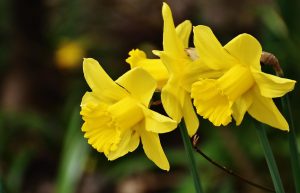Who doesn’t love a home or garden to be filled with beautiful flowers and plants; they add life and ambience to any living space. However, not all plants and flowers are safe for our furry friends, and many can be deadly when ingested.
Here are some of the more common ones to be aware of that may be harmful to your fur-bestie.
Amarylis
AKA: Saint Joseph Lily, Cape Belladona
Toxicity: Dogs and cats
Symptoms: Vomiting, depression, diarrhea, abdominal pain, hypersalivation, anorexia, tremors
Azaleas
AKA: Rhododendron
Toxicity: Dogs and cats
Symptoms: Vomiting, diarrhea, weakness, cardiac failure

Begonia
AKA: Over 1000 species and 10 000 hybrids
Toxicity: Dogs and cats
Symptoms: Kidney failure, vomiting, salivation in dogs and cats. Most toxic part is underground

Calla Lily
AKA: Pig Lily, White Arum, Arum Lily
Toxicity: Dogs and Cats
Symptoms: Oral irritation, intense burning and irritation of mouth, tongue and lips, excessive drooling, vomiting and difficulty swallowing

Chyrsanthemum
AKA: Daisy, Mum
Toxicity: Dogs and cats
Symptoms: Vomiting, diarrhea, hypersalivation, incoordination, dermatitis

Daffodil
AKA: Narcissus, Jonquil, Paper White
Toxicity: Dogs and Cats
Symptoms: Vomiting, salivation, diarrhea, large ingestions cause convulsions, low blood pressure, tremors and cardiac arrhythmias. Bulbs are the most poisonous part

Geranium
AKA: Many cultivars
Toxicity: Dogs and cats
Symptoms: Vomiting, anorexia, depression, dermatitis

Iris
AKA: Flag, Snake Lily, Water Flag
Toxicity: Dogs and cats
Symptoms: Salivation, vomiting, drooling, lethargy, diarrhea. Highest concentration is in the rhizomes

Peace lily
AKA: Mauna Loa Peace Lily
Toxicity: Dogs and cats
Symptoms: Oral irritation, intense burning and irritation of mouth, tongue and lips, excessive drooling, vomiting, difficulty swallowing

Tulip
AKA: Tulipa
Toxicity: Dogs and cats
Symptoms: Vomiting, depression, diarrhea, hypersalivation. Highest concentration of toxin is in the bulb

If you think your furry friend may have ingested any of these, it is important to contact your veterinarian straight away.
References:
https://www.aspca.org/pet-care/animal-poison-control/toxic-and-non-toxic-plants


